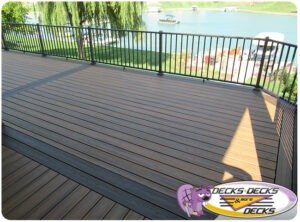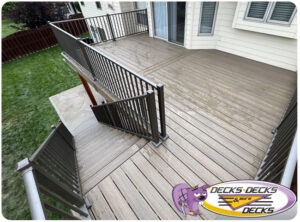Deck Load Capacity: How Much Weight Can a Deck Hold?
When planning or maintaining a deck, understanding its load capacity is crucial for safety and functionality. Deck load capacity refers to the maximum weight a deck can support without compromising its structural integrity. Whether you’re hosting a large gathering, adding new features, or just curious about your deck’s limits, knowing how much weight your deck can hold is essential. Here’s a comprehensive guide to deck load capacity and factors affecting it.
What Is Deck Load Capacity?
Deck load capacity is the maximum weight a deck can safely support. This includes the weight of the deck itself, along with any additional loads from people, furniture, and other items. Load capacity is typically measured in pounds per square foot (PSF).
Types of Loads
- Live Load:
- This includes temporary or moving loads such as people, furniture, and other items. For residential decks, the typical live load requirement is 40 PSF, but this can vary based on local building codes and deck use.
- Dead Load:
- Dead load refers to the permanent weight of the deck, including the weight of the deck materials, structural components, and any permanent fixtures. It is usually calculated as 10-15 PSF for standard residential decks.
Factors Affecting Deck Load Capacity
- Deck Material:
- Wood Decks: The type and grade of wood affect its load-bearing capacity. Hardwoods like oak and maple generally have higher load capacities compared to softwoods like pine.
- Composite Decks: Composite materials, often made from a blend of wood fibers and plastic, are designed to offer higher durability and load capacity than some traditional woods.
- Structural Design:
- Joist Spacing: The distance between joists (usually 16 or 24 inches on center) affects load capacity. Closer joist spacing generally increases load capacity.
- Beam Size and Spacing: Larger and more closely spaced beams provide greater support and increase load capacity.
- Post Size and Spacing: Properly sized and spaced posts are crucial for supporting the deck’s weight.
- Deck Size and Shape:
- Size: Larger decks require more structural support to maintain load capacity. Decks that extend far from the house may require additional bracing or support.
- Shape: Irregularly shaped decks or those with large cantilevered sections may have different load distribution requirements compared to standard rectangular decks.
- Foundation and Support:
- Footings: Properly sized and placed footings are essential for supporting the deck’s load. Footings should be installed below the frost line in colder climates to prevent shifting.
- Concrete Piers: Concrete piers provide stable support for deck posts and are critical for maintaining load capacity.
- Local Building Codes:
- Building codes vary by location and dictate the minimum load capacity requirements for decks. Always check with local authorities or a structural engineer to ensure your deck meets local code requirements.

How to Determine Your Deck’s Load Capacity
- Consult a Structural Engineer:
- For precise calculations and assessments, especially if you’re adding heavy features or experiencing issues, consulting a structural engineer is recommended.
- Review Building Plans:
- If you have access to the original building plans, they may include information about the deck’s load capacity and structural specifications.
- Conduct a Load Test:
- For existing decks, a load test can be performed to determine the actual load capacity. This involves applying a known weight to the deck and observing its performance.
Tips for Maintaining Deck Load Capacity
- Regular Inspections: Inspect your deck regularly for signs of wear, damage, or deterioration. Address any issues promptly to maintain load capacity.
- Reinforce as Needed: If adding heavy features or experiencing issues, reinforce the deck with additional support as necessary.
- Follow Maintenance Guidelines: Proper maintenance, including sealing and cleaning, helps ensure the deck remains in good condition and retains its load capacity.
Conclusion
Understanding and maintaining your deck’s load capacity is vital for ensuring safety and functionality. By considering factors like material, structural design, and local building codes, you can determine how much weight your deck can hold and make informed decisions about its use and maintenance.
 free estimates: (402) 690-1050
free estimates: (402) 690-1050







